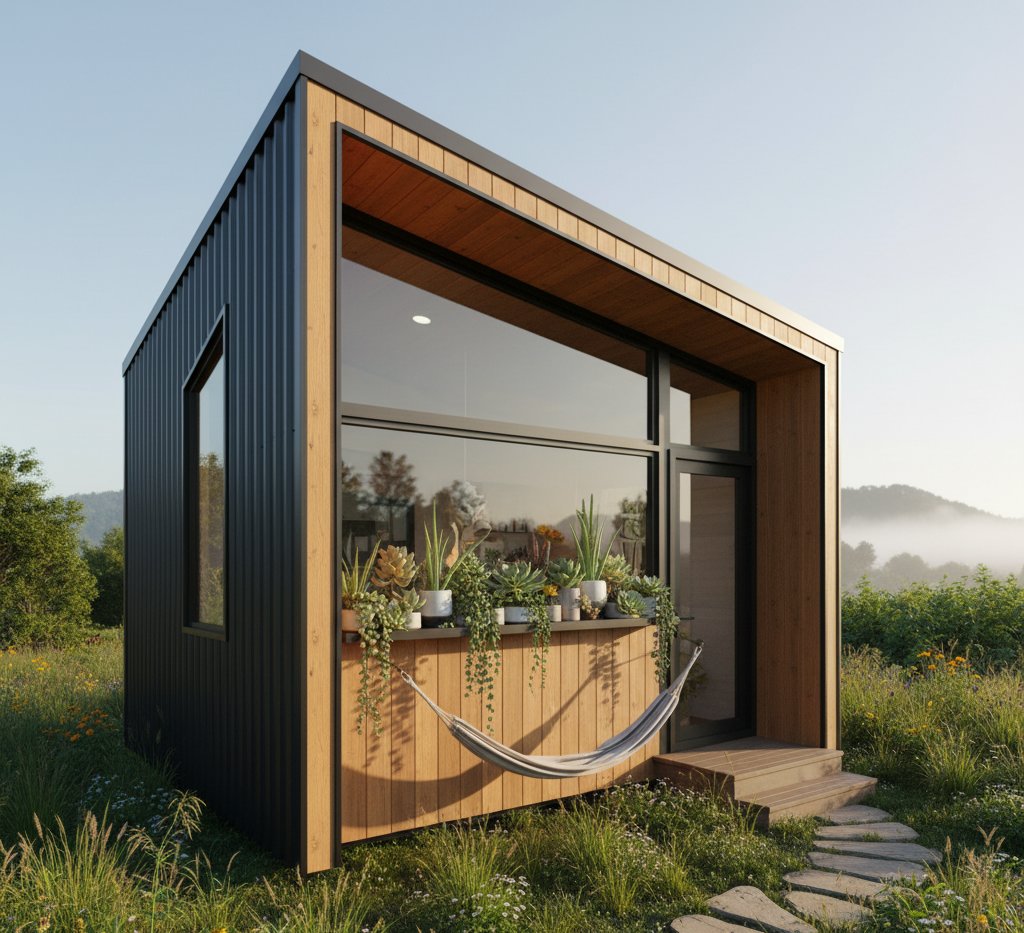Succulents For Tiny Homes
Living in a small space doesn’t mean you have to give up on plants. Succulents make it easy to bring nature indoors without taking over your home. Their compact size, slow growth, and low-maintenance care make them perfect for apartments, studios, or any place where space is limited. You can enjoy greenery in even the tiniest home by choosing succulents that stay small and thrive in small containers.
You’ll find that these plants come in many shapes, colors, and textures, so they can fit your style while staying practical. From tiny rosettes to unusual stone-like varieties, succulents add interest without creating clutter. With the right choices, you can enjoy a collection that looks fresh and inviting without constant upkeep.
Beyond simply picking the right plants, you can also arrange them in creative ways to make the most of your space. Whether you want a simple desktop pot, a small windowsill display, or a wall-mounted design, succulents give you flexible options that work in any room.
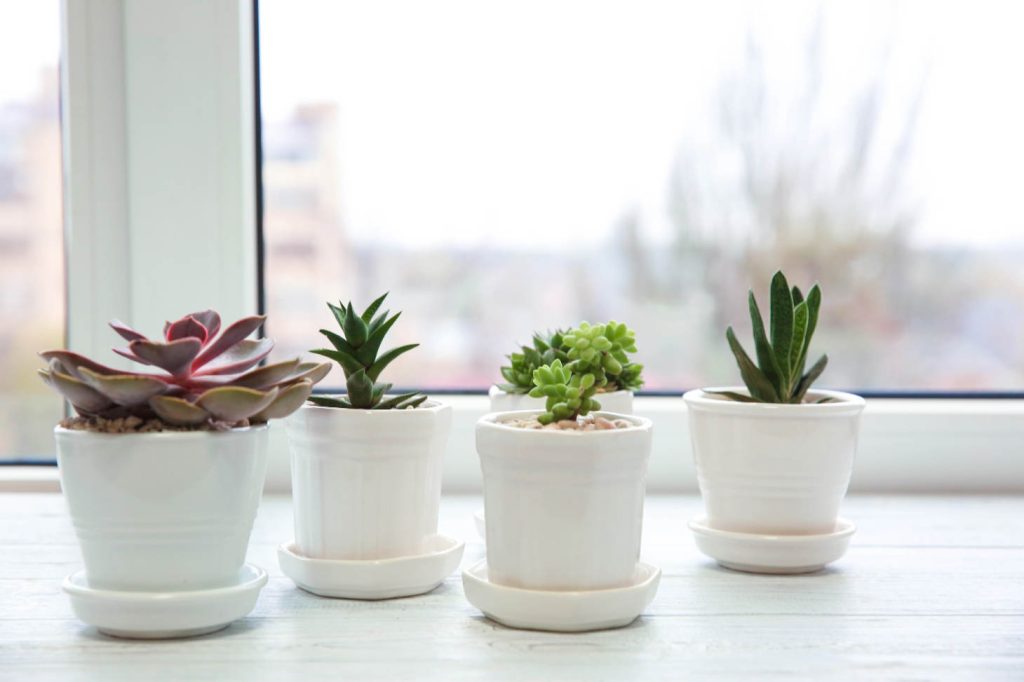
Best Succulents for Tiny Homes
When space is limited, you need plants that stay small, grow slowly, and adapt well to containers. Certain succulents are especially suited for compact living because they remain tidy, require little upkeep, and can survive well with good grow lights or in bright spots indoors.
Top Compact Succulent Varieties
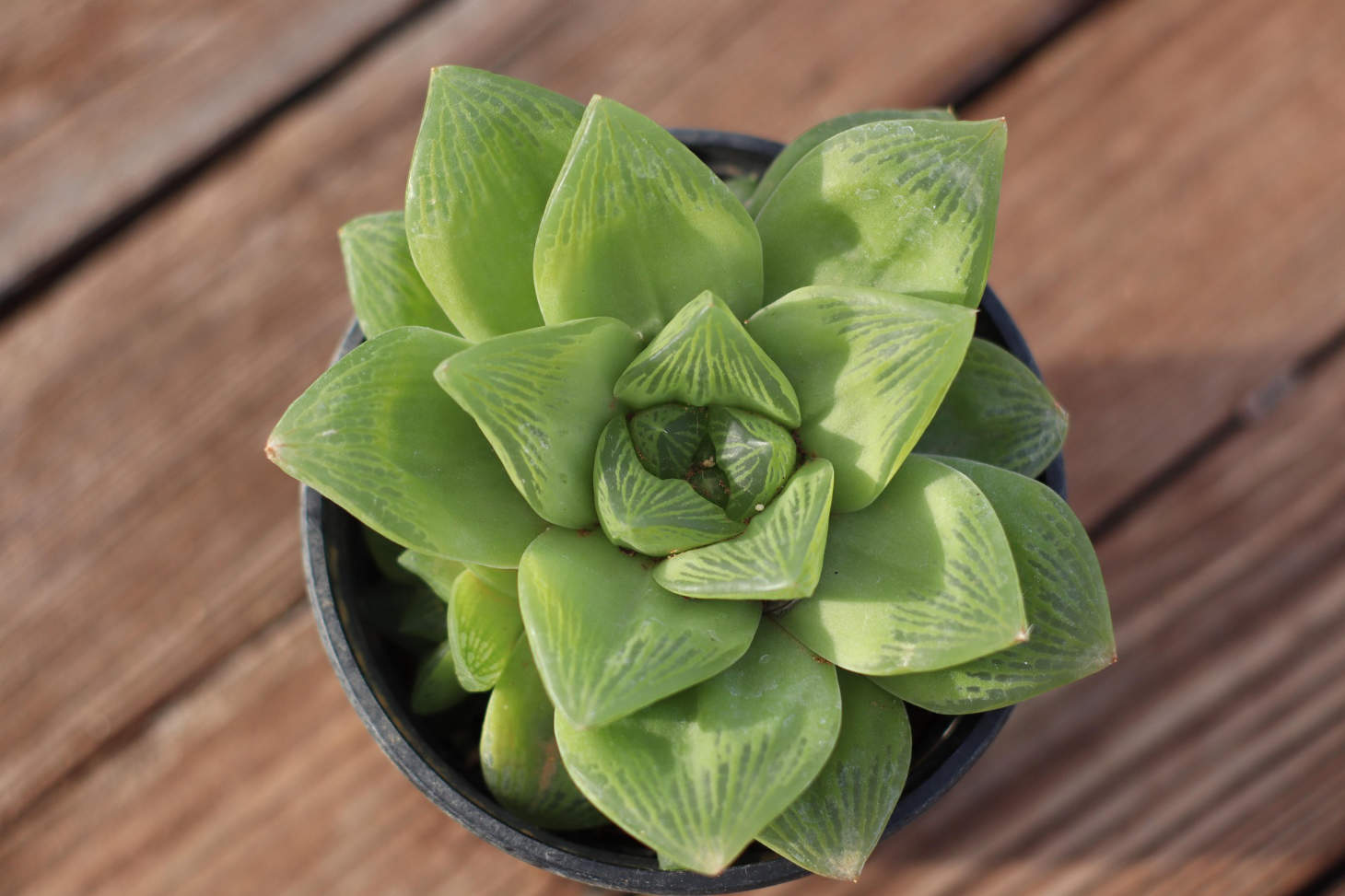
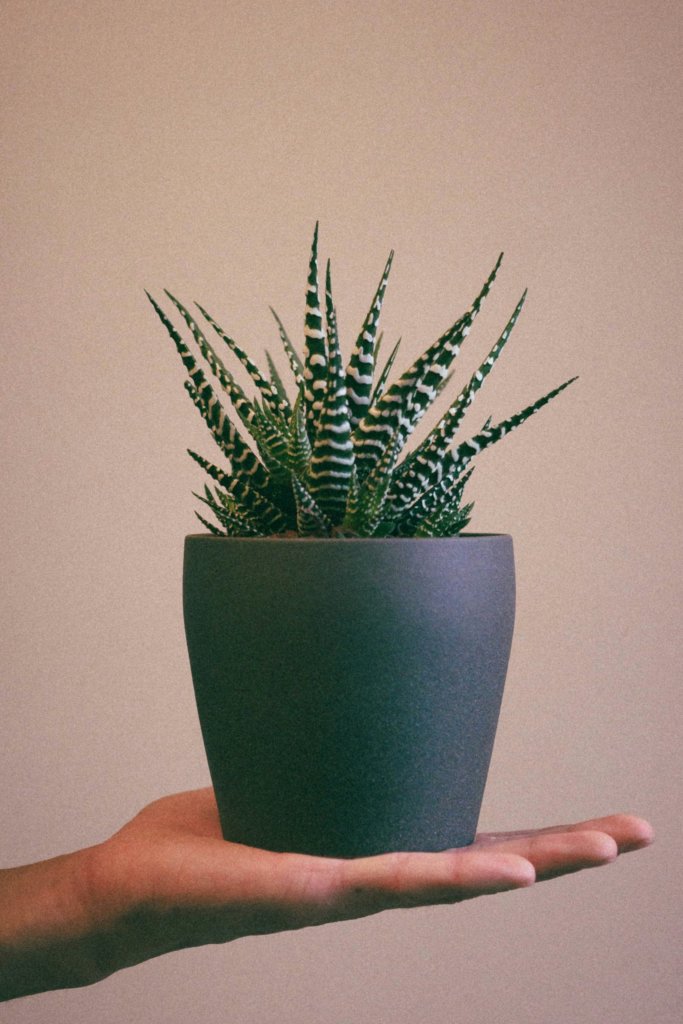

Some succulents naturally stay small, making them ideal for shelves, windowsills, or small pots.
- Haworthia (e.g., H. cooperi), known for their neat rosette form, are excellent compact choices. The popular Zebra Plant (Haworthiopsis attenuata) also grows in a neat rosette and rarely outgrows a 3–4 inch pot.
- Lithops, also known as Living Stones, stay extremely compact and can fit several in a shallow dish.
- Small Echeveria (e.g., E. minima) and many Sempervivum varieties produce small rosettes that cluster over time but remain low to the soil.
- Sedum ‘Little Gem’ is another option that stays compact, forming dense mats in bright light and is perfect for a tidy look without frequent trimming.
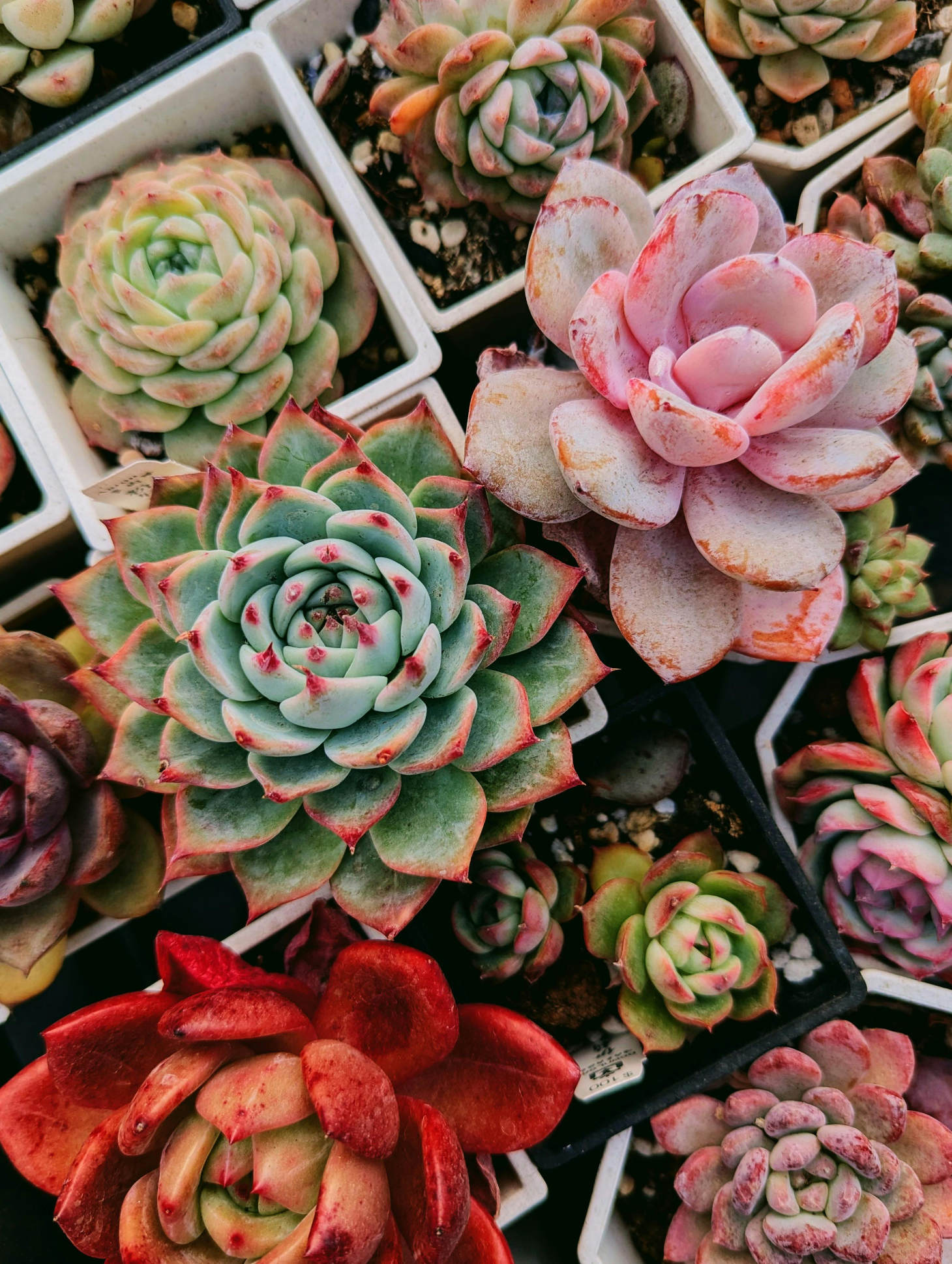
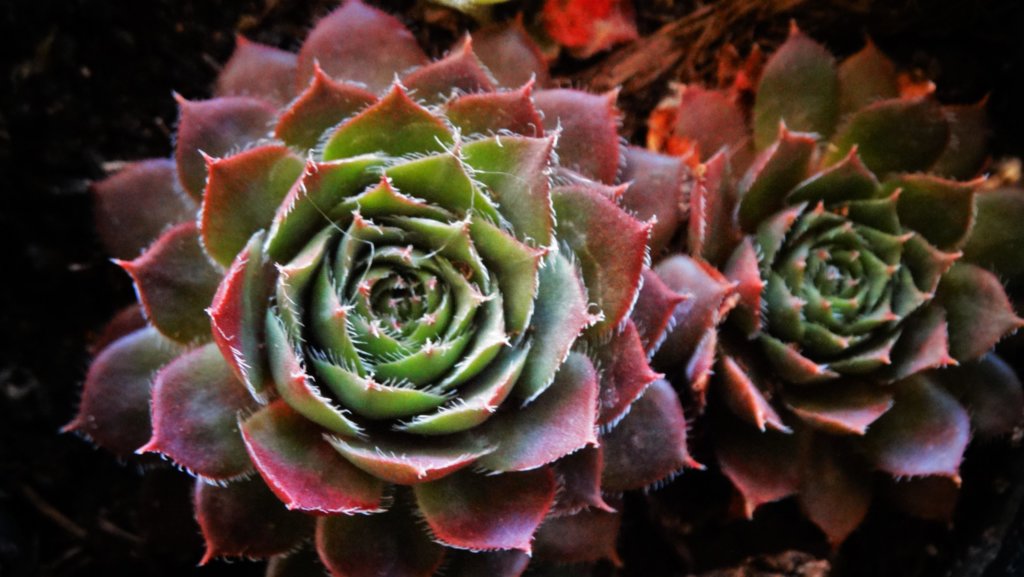
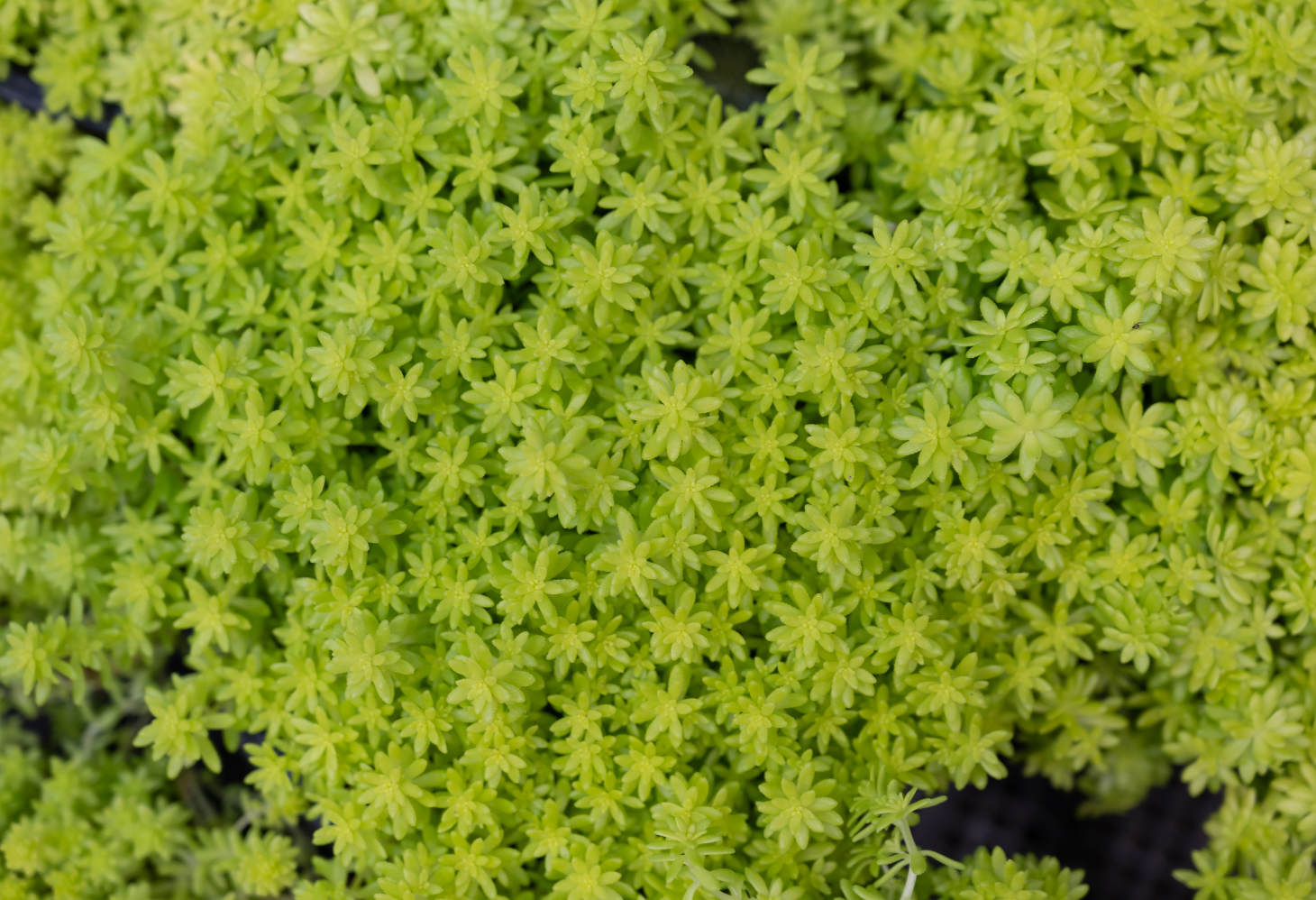
Here are a few favorites:
| Succulent | Growth Habit | Best Use |
|---|---|---|
| Haworthia | Rosette, slow grower | Desk or shelf |
| Lithops | Stone-like, tiny | Shallow dishes |
| Echeveria minima | Small rosettes | Small pots |
| Sedum ‘Little Gem’ | Compact mat | Sunny windowsill |
| Sempervivum | Clumping rosettes | Outdoor containers |
Choosing Between Indoor and Outdoor Options
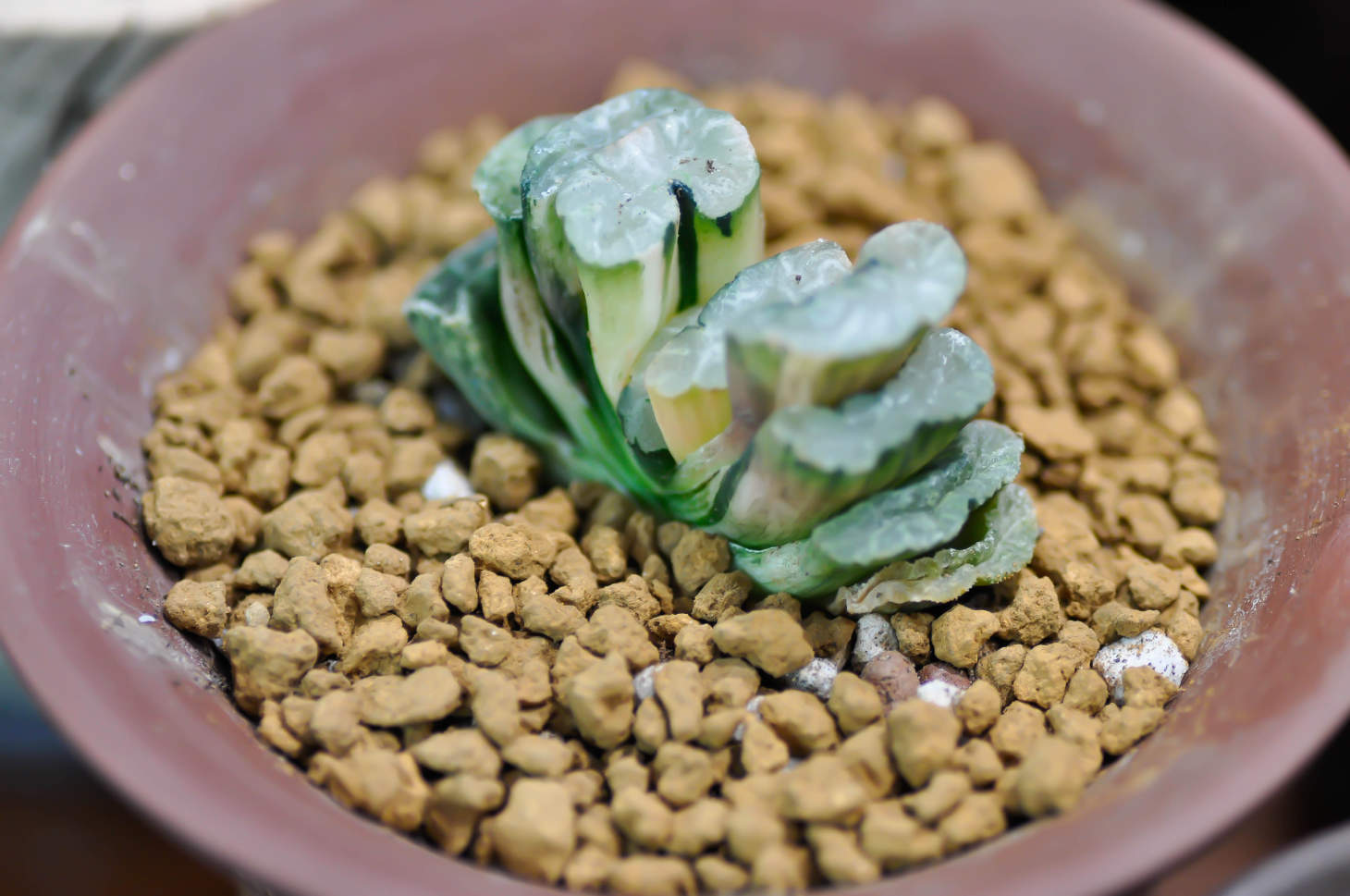
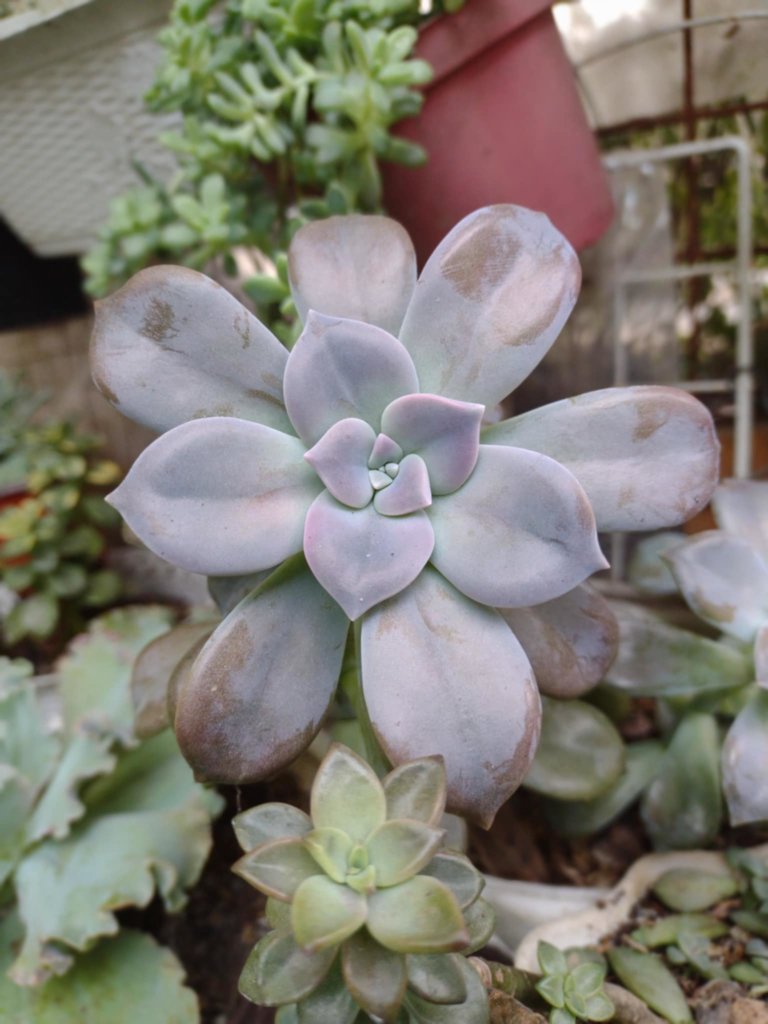
Your choice depends on light, temperature, and space. Indoors, succulents like Haworthia and Graptopetalum handle lower light levels and grow well under grow lights. These plants stay compact and tolerate the stable conditions of small apartments.
If you have a patio, balcony, or bright window, Sempervivum and Sedum varieties thrive outdoors. They prefer cooler nights and direct sun, which helps them stay compact and colorful. Outdoor succulents often need more frequent watering because the soil dries faster due to increased heat and air circulation.
For mixed spaces, you can keep a few smaller pots indoors year-round and rotate sturdier plants like Echeveria outside when the weather is mild. This approach lets you enjoy more variety without overcrowding your living area.
Low-Maintenance Succulents for Small Spaces
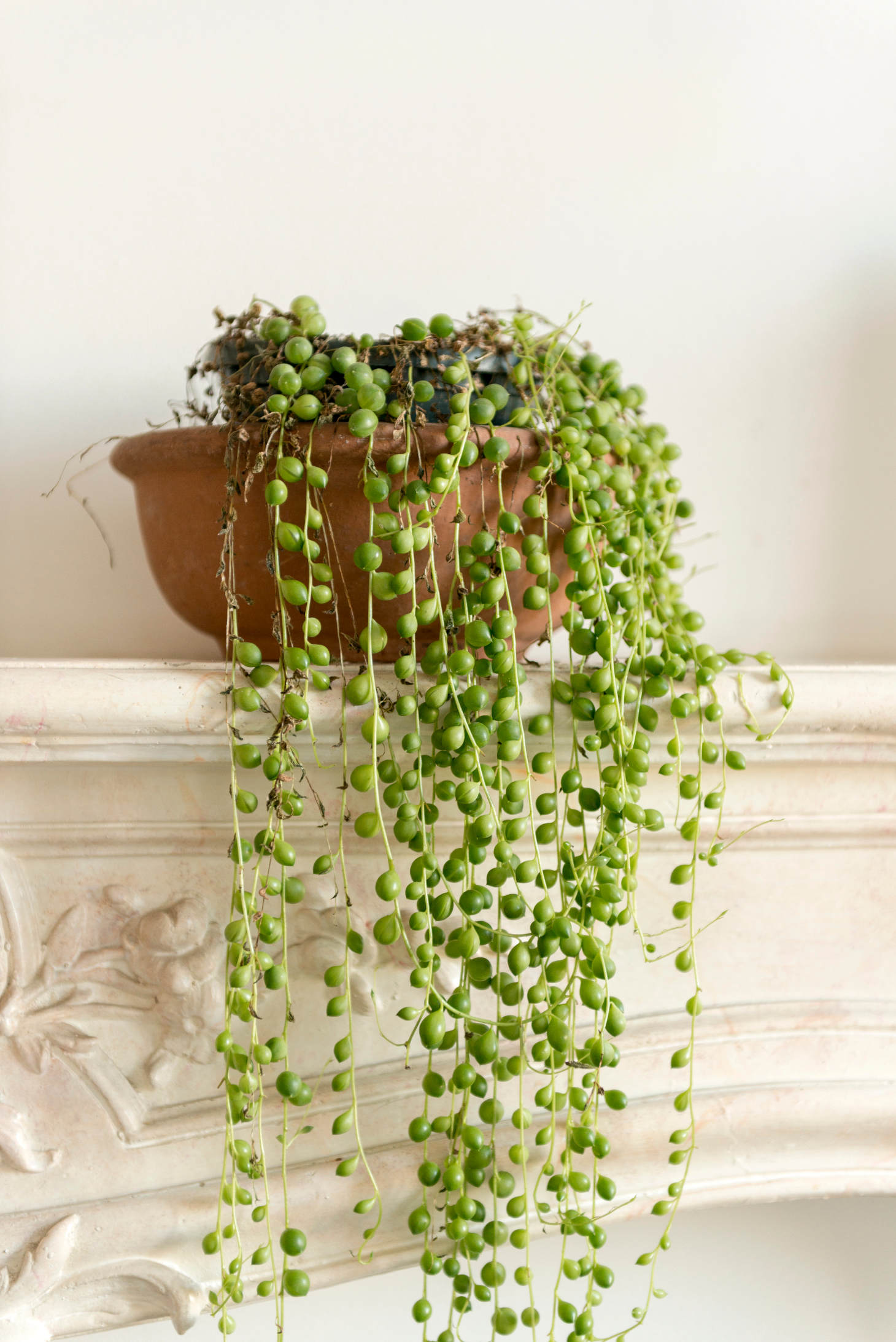
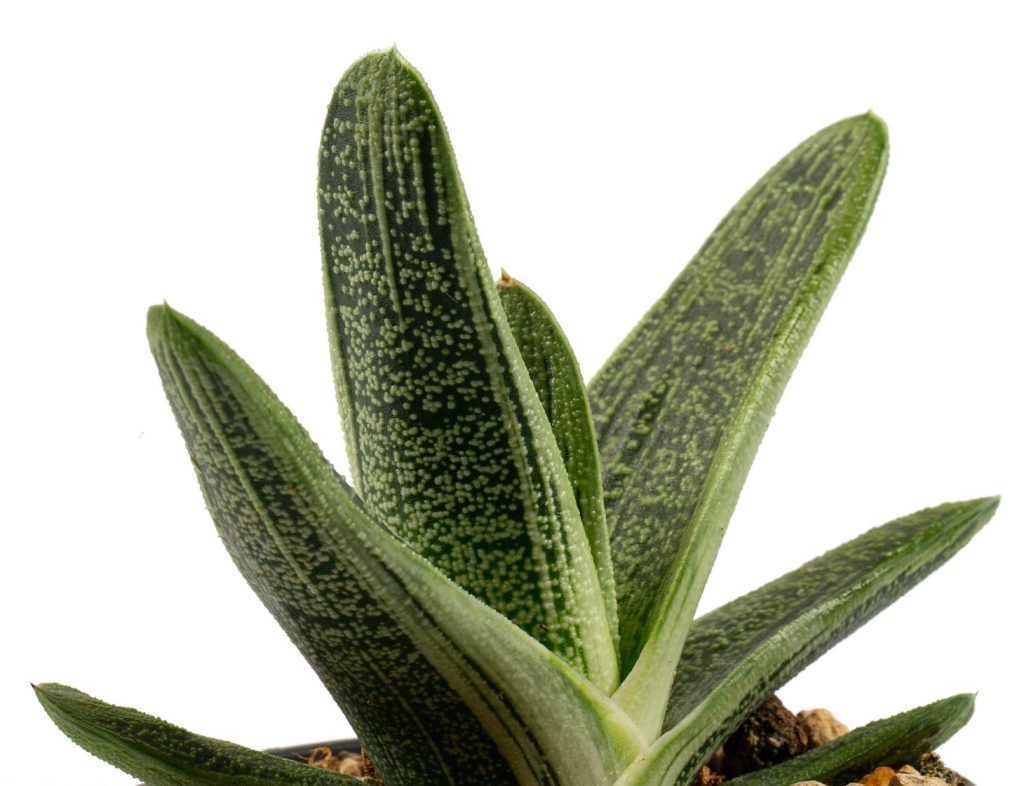
If you want plants that need little care, focus on slow-growing and drought-tolerant varieties. Senecio rowleyanus (String of Pearls) trails gently without taking up much horizontal space. It works well in hanging planters where floor space is limited.
Haworthia and Gasteria require little water and tolerate lower light, making them reliable for busy schedules. Echeveria needs brighter light but is still easy to maintain with minimal watering. Lithops are among the lowest-maintenance options, as they only need water a few times a year.
To simplify care, group succulents with similar needs. For example:
- Low light, low water: Haworthia, Gasteria
- Bright light, moderate water: Echeveria, Sedum
- Minimal care: Lithops, Sempervivum
This way, you avoid overwatering or stressing plants that prefer different conditions.
Creative Succulent Design Ideas for Limited Spaces
Small areas can still support a thoughtful garden design when you use compact plants like succulents. By choosing the right containers, layouts, and plant varieties, you can create displays that save space while staying visually balanced.
Vertical and Wall-Mounted Arrangements
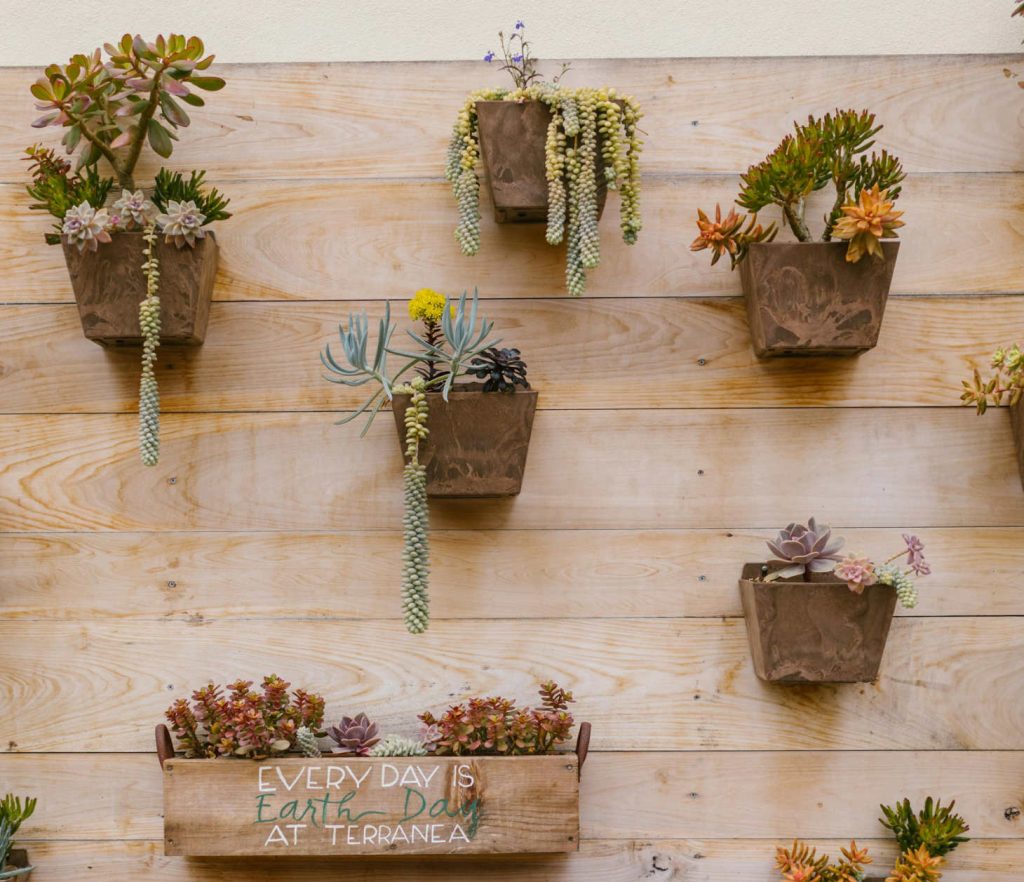
Using vertical space helps you keep surfaces clear while still enjoying greenery. Wall-mounted planters, hanging frames, and pocket organizers can hold shallow-rooted succulents such as echeveria or sedum. These plants stay compact and adapt well to smaller soil areas.
You can arrange succulents in geometric patterns or simple rows for a clean look. A grid-style planter with repeating rosettes of sempervivum creates order, while mixing textures adds variety.
For better growth, choose containers with drainage holes and use fast-draining soil. Place planters in the brightest location possible (such as a south-facing window) to ensure adequate light without taking up floor space.
Tabletop and Windowsill Displays
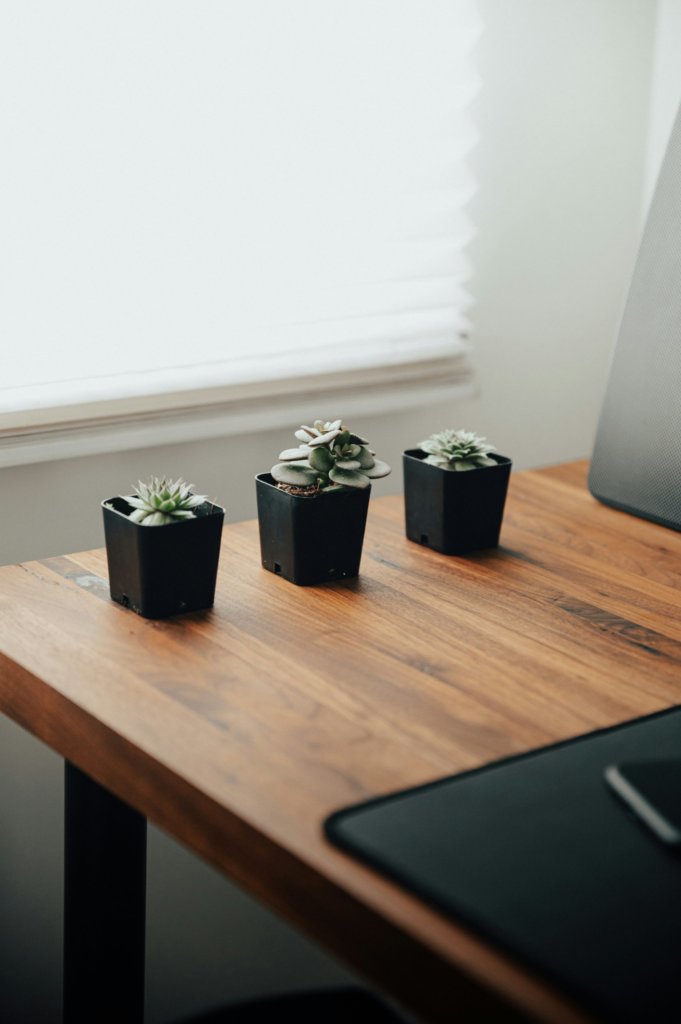
Flat surfaces like tables, desks, and windowsills give you a chance to showcase small groupings. Low bowls, shallow trays, or even repurposed items like mugs or tins work well. Compact succulents such as echeveria rosettes or trailing sedum varieties fit neatly into these containers.
To prevent clutter, limit each display to a few plants. A single echeveria surrounded by pebbles looks neat and easy to maintain. You can also line up several matching pots along a windowsill for a uniform style.
Use a well-draining succulent soil mix and a container with a drainage hole. A top layer of gravel or sand gives the arrangement a finished look. Place these displays where they can get bright, indirect light for steady growth.
Miniature Container Gardens
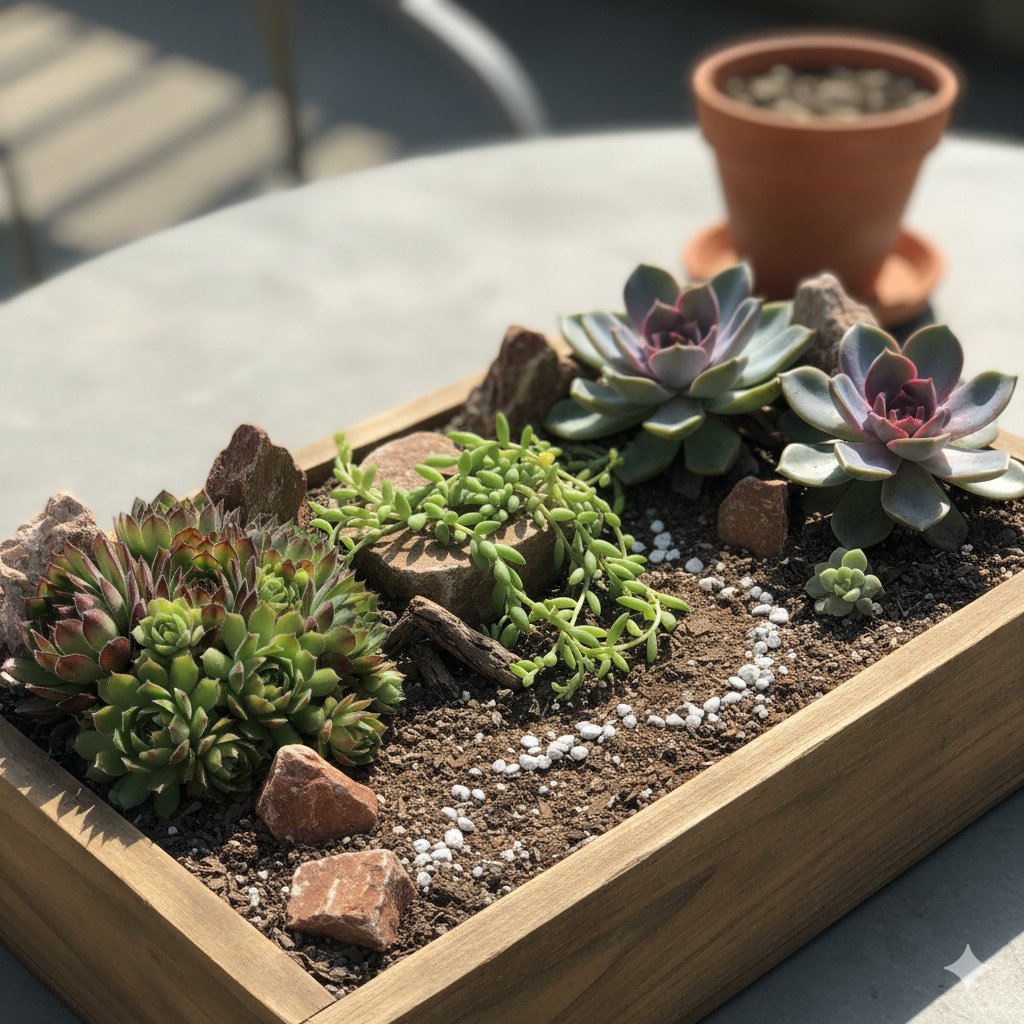
Miniature gardens let you design small-scale landscapes that fit into bowls, trays, or shallow boxes. You can combine succulents like sempervivum, sedum, and echeveria to create contrast in color and shape.
Adding small rocks, paths, or tiny decorations makes the garden look more complete. For example, surrounding a larger echeveria with smaller sedum varieties creates depth while keeping the design compact.
These gardens work well for shelves, coffee tables, or kitchen counters. Since the containers are small, water lightly and use soil that dries quickly. This prevents root issues while keeping your display tidy and long-lasting.
Frequently Asked Questions
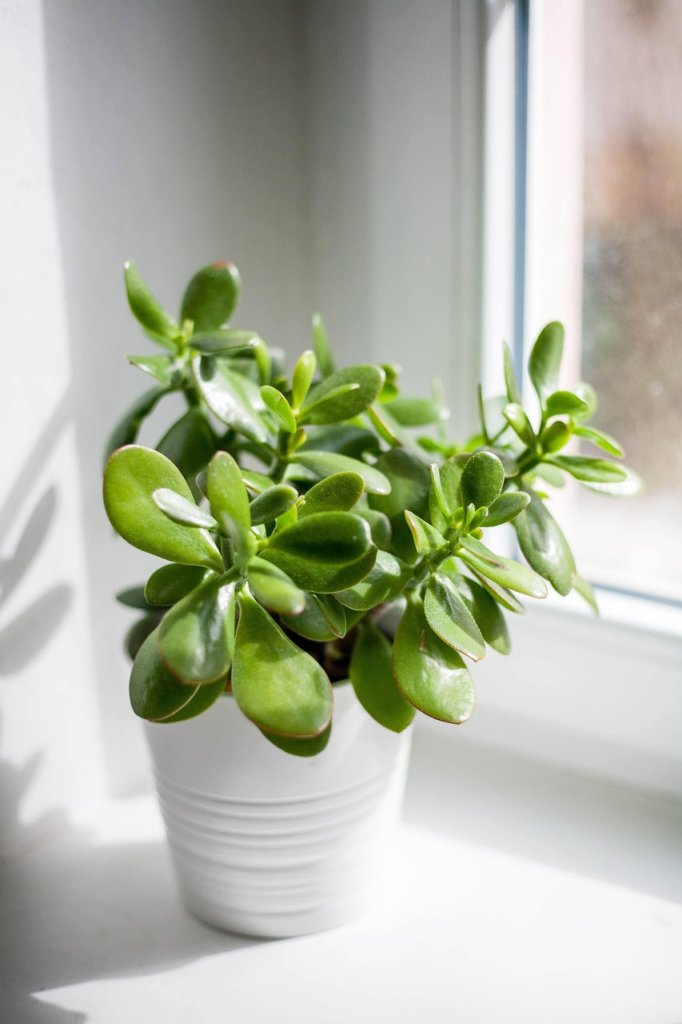
Succulents fit well in small homes because they need little water, adapt to low space, and offer many compact varieties. You can find options that stay small, handle indoor light, and require minimal upkeep.
What are the best low maintenance succulents for small living spaces?
Choose haworthia, aloe vera, and zebra plants for easy care. These plants tolerate missed waterings and adapt well to small containers. They also grow slowly, so they won’t outgrow your space quickly.
Which succulents are suitable for indoor environments in compact homes?
Jade plants, snake plants, and echeveria do well indoors. They handle indirect light and can thrive on windowsills or shelves. These types also stay tidy in small pots.
How can I care for succulents in a tiny home with limited space?
Use pots with drainage holes and avoid overwatering. Provide bright light, this often means a sunny windowsill or using a grow light if natural light is insufficient. Rotate the pots every few weeks so the plants grow evenly.
What types of miniature succulents are ideal for gifting?
Mini echeveria, string of pearls, and sedum make attractive gifts. Their small size and unique shapes fit nicely in decorative containers. They are also hardy enough for beginners to enjoy.
Can small succulents thrive in confined areas without regular repotting?
Yes, many mini succulents can live in the same pot for a year or more. As long as the soil drains well and the plant stays healthy, frequent repotting isn’t necessary.
What is the easiest variety of succulent to maintain for beginners?
Aloe vera and haworthia are often the easiest for new growers. They need little water, survive in average indoor light, and rarely suffer from pests. These plants are forgiving if you forget to water occasionally.

